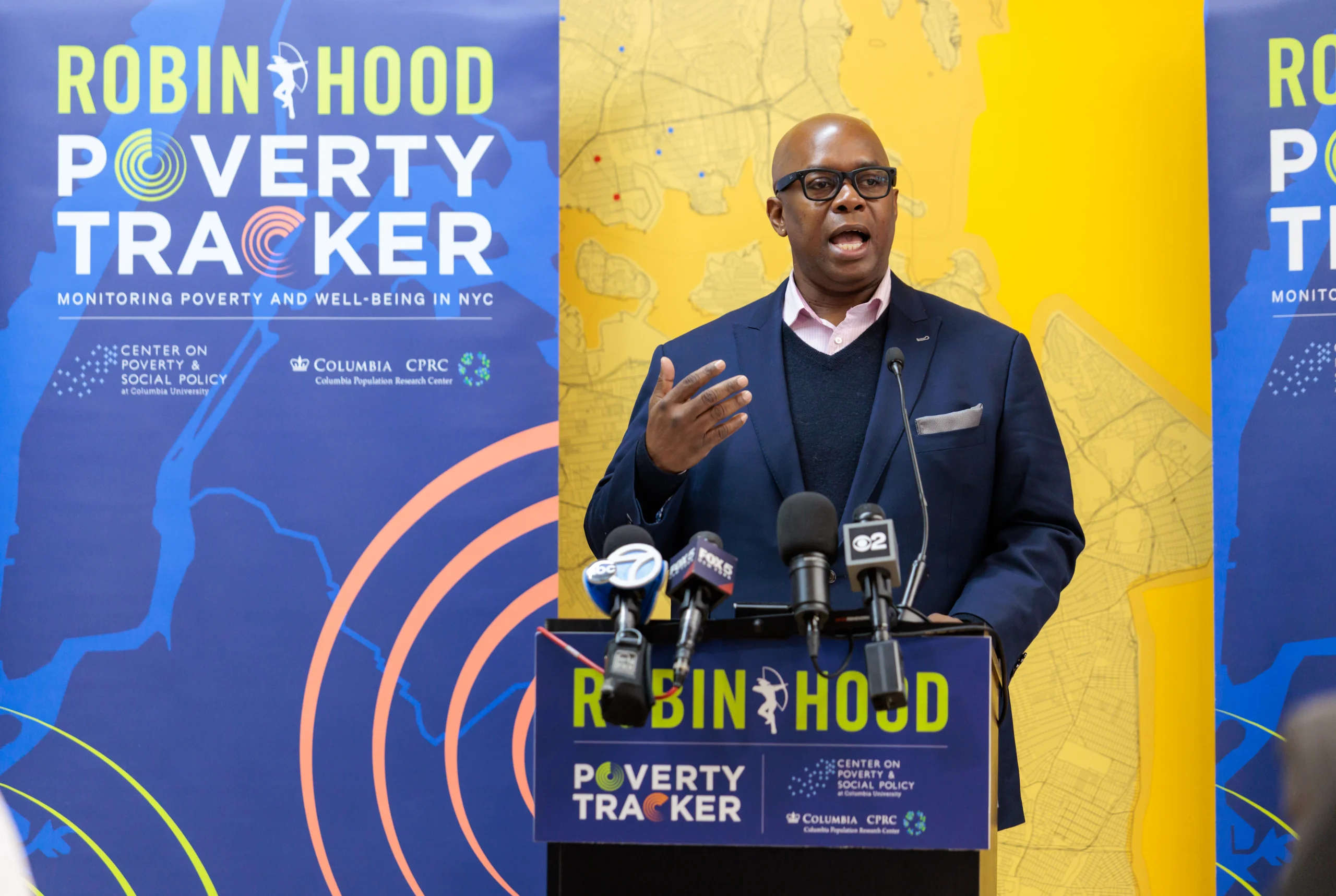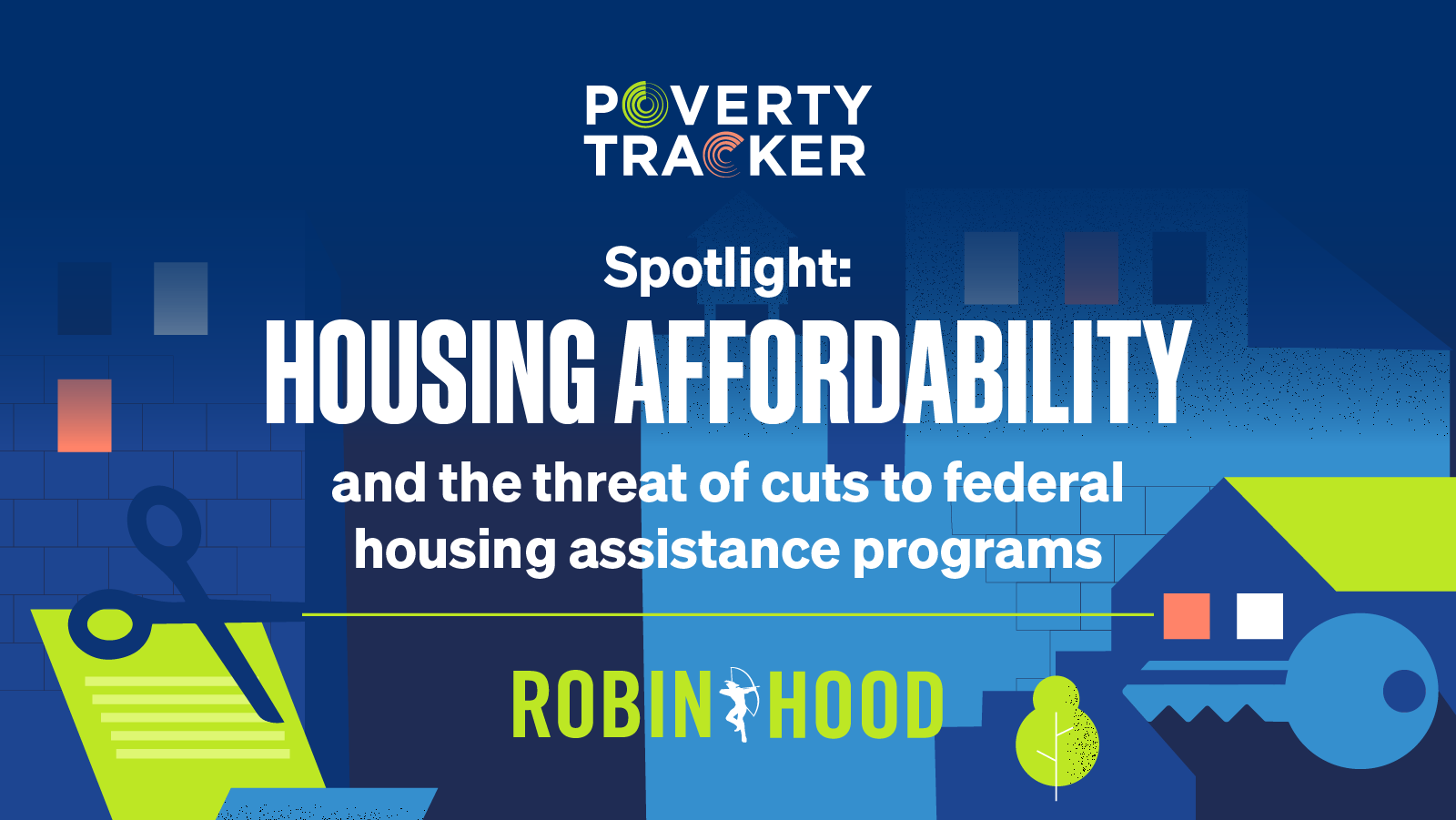May 18, 2020
Poverty Tracker Spotlight: COVID-19, Poverty & Hardship
Robin Hood’s Poverty Tracker checks in regularly with a representative sample of New Yorkers, monitoring trends in poverty, disadvantage, and well-being. Through the COVID-19 outbreak, we’re continuing to check in with these families to learn how the pandemic is impacting New York City’s most vulnerable. This unique dataset informs our relief grant-making and investment strategy — providing insight into where the greatest needs are and which nonprofits are best suited to meet these needs. We are also leveraging this data to lead and influence the broader field by sharing it with other philanthropies, donors, elected officials, and nonprofits to ensure that the communities Robin Hood cares about are prioritized as decisions are made about public and private relief and recovery efforts.
Preliminary findings from our first COVID-19 Poverty Tracker survey show that COVID-19-related unemployment and income losses are hitting those who were already financially vulnerable prior to the crisis the hardest; 22 percent of respondents who have lost work for a reason related to COVID-19 were already living in poverty before the crisis.
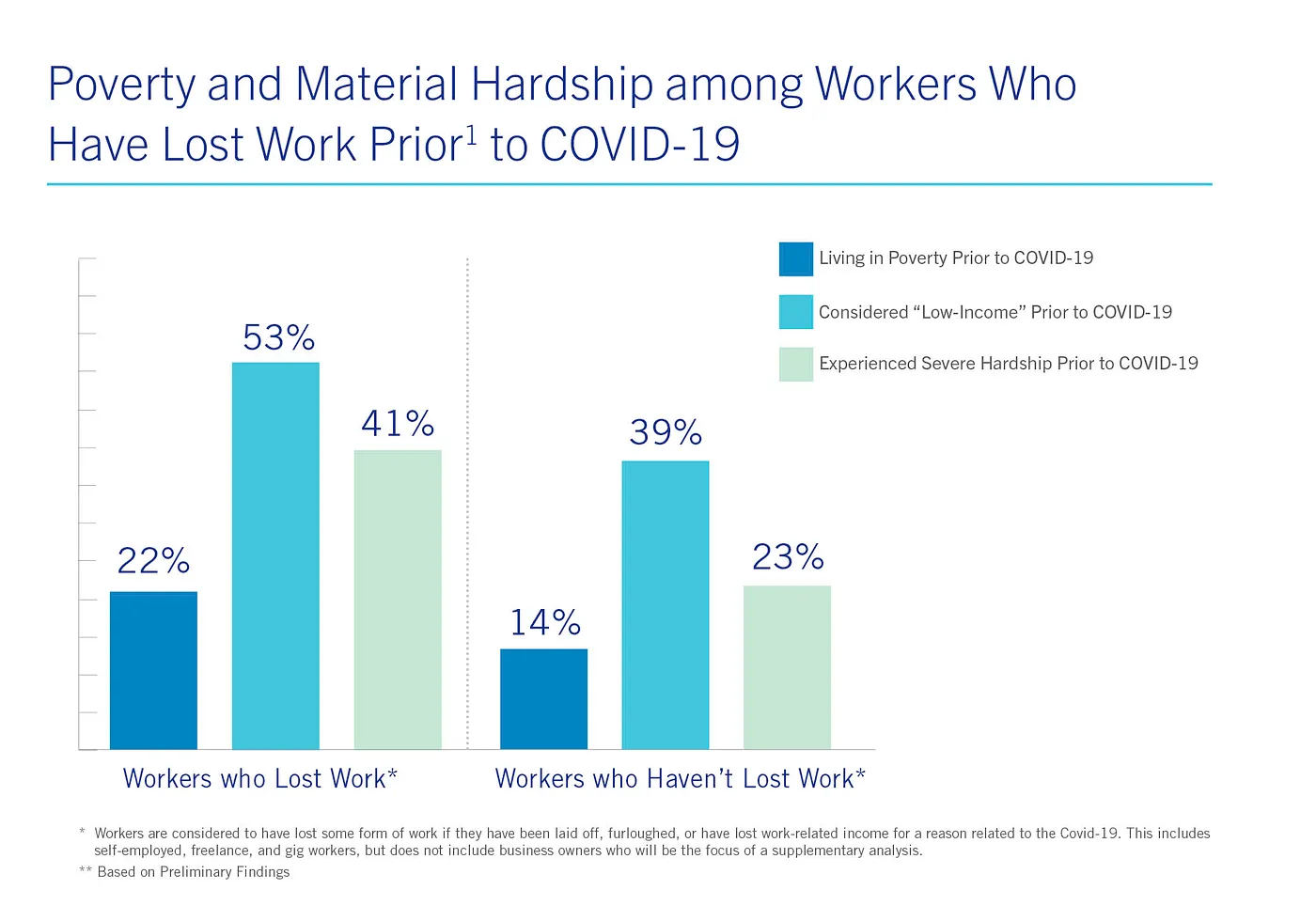
Black and Hispanic respondents who have endured COVID-19-related work and income losses were even move likely to be living in poverty prior to the crisis, revealing the systemic racial inequities this pandemic is bringing to light; roughly one-in-three Black and Hispanic respondents who have lost work as a result of COVID-19 were living in poverty prior to the outbreak, compared to 22 percent of all respondents who have lost work.
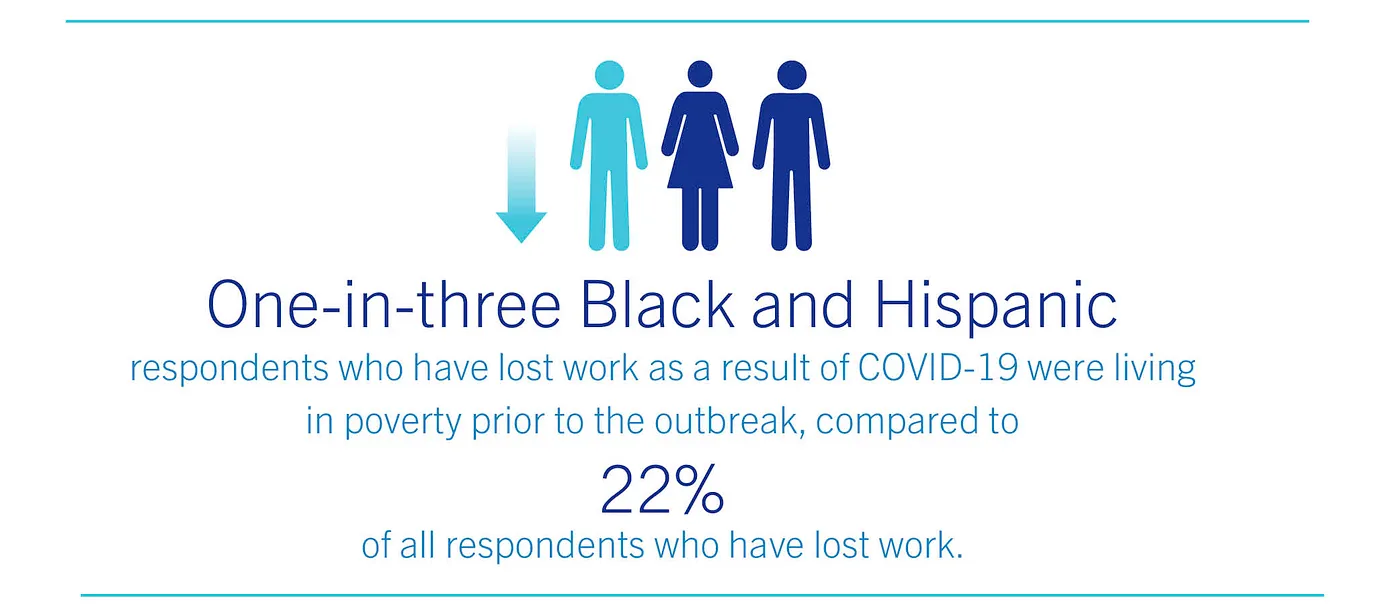
Past experiences of severe material hardship, such as running out of food without enough money to buy more and having utilities cut off, are also more common among respondents who have lost work relative to those who have not. The preliminary data show that 41 percent of respondents who have lost work experienced severe material hardship just over a year ago, and, like the poverty rate, severe material hardship was less common among those who have not lost work (23 percent).
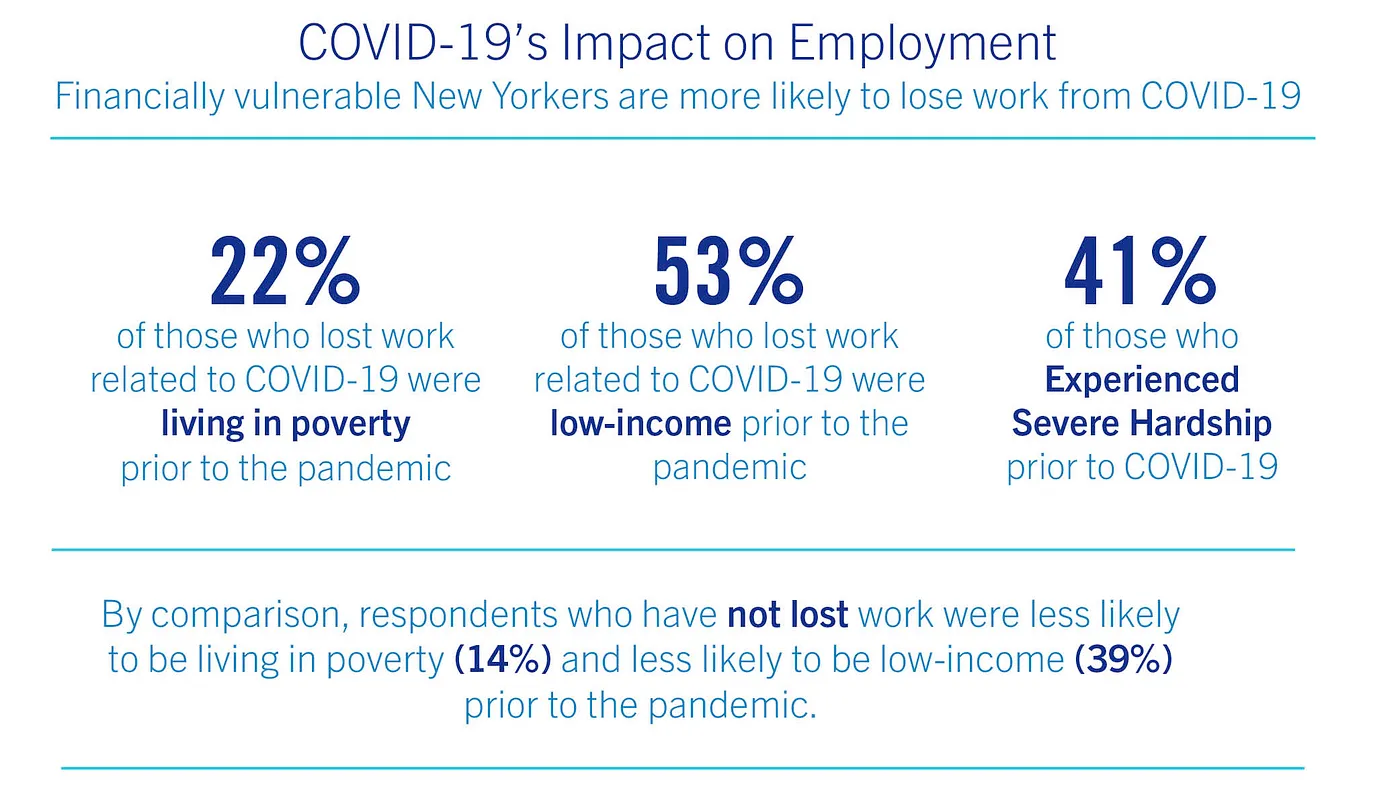
These preliminary results suggest that workers who have faced poverty and material hardship are overrepresented among those who have endured these employment losses, making them even more vulnerable to falling into dire circumstances in the economic fallout driven by COVID-19.
Why are these results preliminary?
The Poverty Tracker surveys a representative sample of New Yorkers, and when weighted, the survey is representative of the adult population in New York City. Each Poverty Tracker survey is in the field for roughly six months, with the bulk of responses arriving in the first three months. The Poverty Tracker survey on the economic impacts of COVID-19 has been in the field for more than a month, and roughly 80 percent of our respondents have completed the survey, but we continue to survey New Yorkers daily. These preliminary results are based on data from this initial period of survey collection, but people who complete the survey later may have a different demographic profile than those who completed it earlier, meaning results could change when the survey is complete; and changes will likely be marginal. Final results will be prepared once the survey on the economic impacts of COVID-19 is no longer in the field and survey weights are developed. At that point, findings from the survey will also be representative of the adult population in New York City.
More About the Poverty Tracker
Launched in 2012 and conducted in partnership with Columbia University, the Robin Hood Poverty Tracker is a groundbreaking study of disadvantage in New York City. Unlike typical surveys of poverty that take an annual snapshot, Poverty Tracker checks in with the same 4,000 households quarter after quarter for several years. This approach provides a dynamic view of poverty over time.
